Bohemian weights (Bohemia and Silesia)
Some say the first glass paperweights were made in Bohemia. If not first, they were a close second to Venice. Bohemia and Venice were both parts of the Austro-Hungarian Empire at times. Bohemian weights were made from the 1840s to present. Over the course of all those years Bohemian glass artists employed numerous techniques and produced many fine and fascinating paperweights that add an element of paperweight history and diversity to a collection. My estimated dates are ball park figures as accurate information is difficult to find. These weights are way undervalued which gives you a lot of history and artistry for excellent value. We use the term Bohemian a bit loosely and it may include areas that are currently in Germany, Poland, Austria, or Czechia. Historically the glass regions for central Europe were in Bohemia, Thuringia, Austria, and Silesia. The area has a rich history.
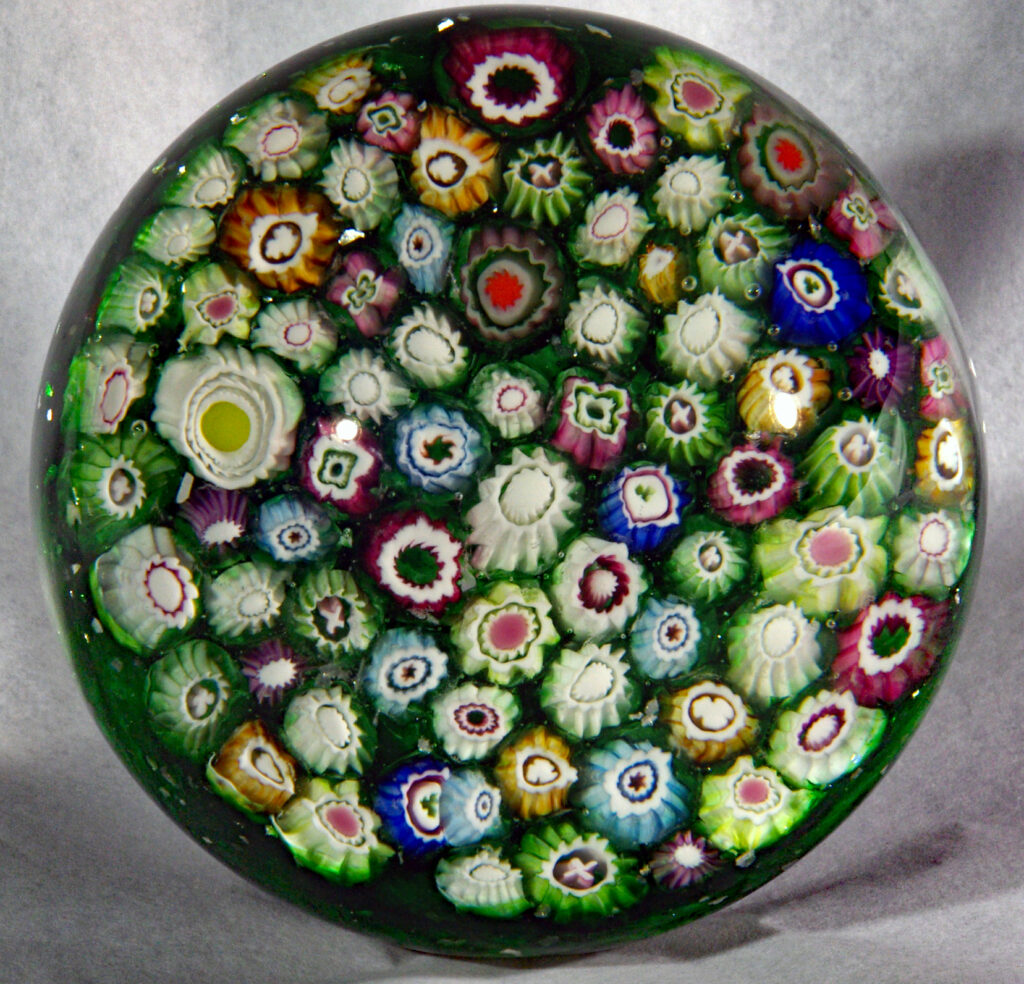
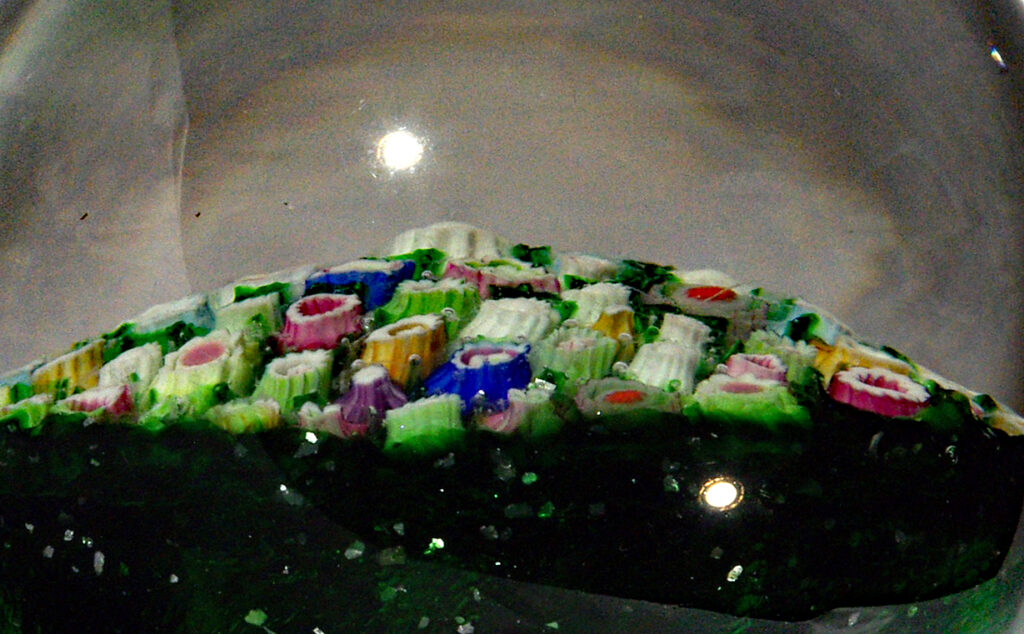
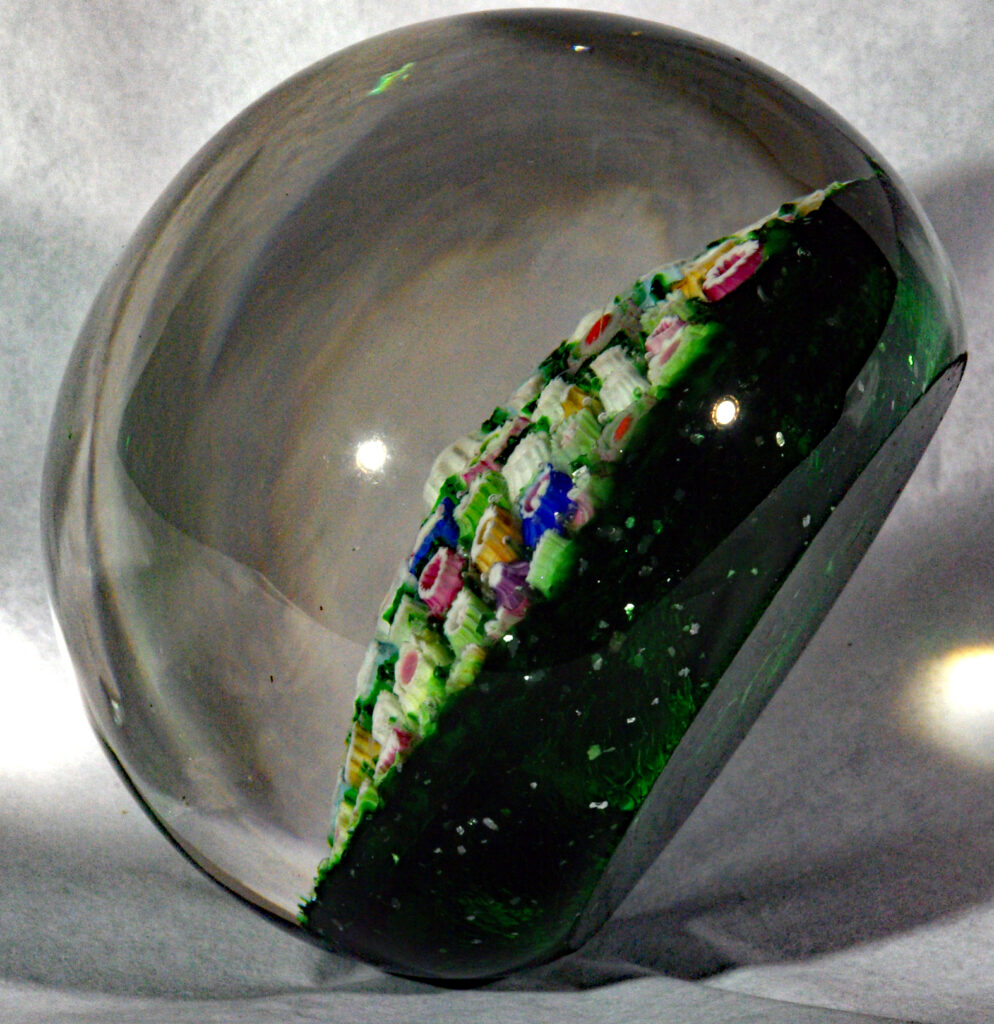
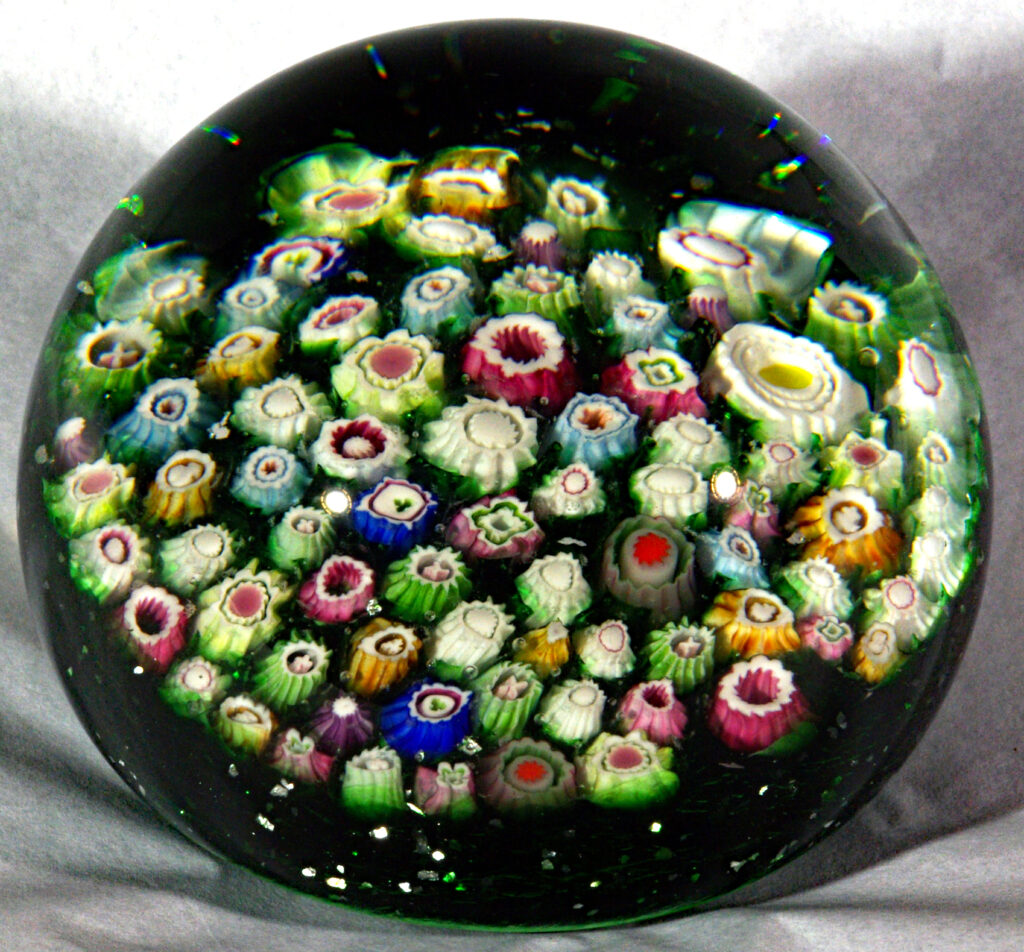
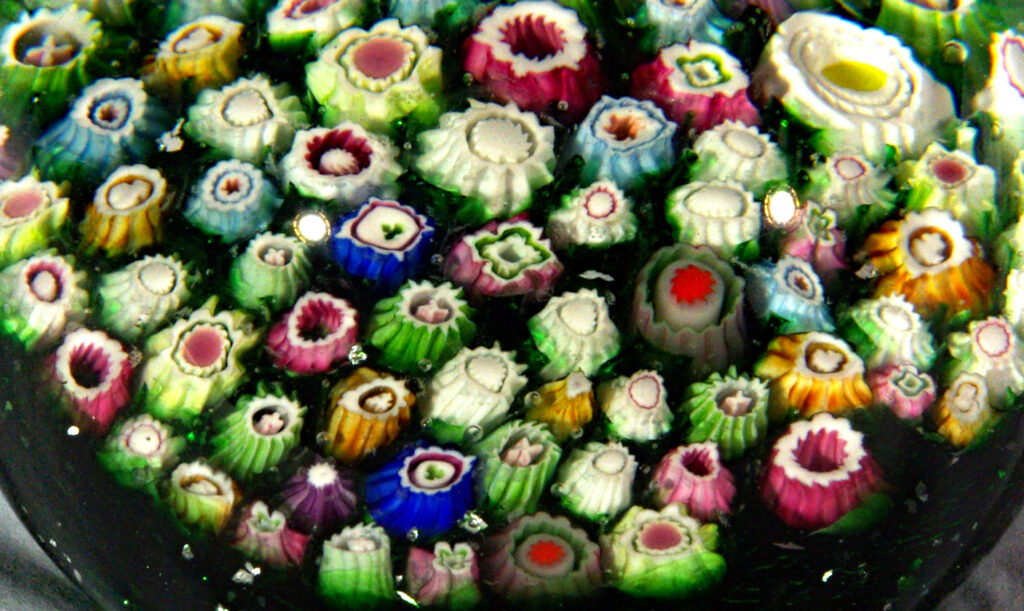
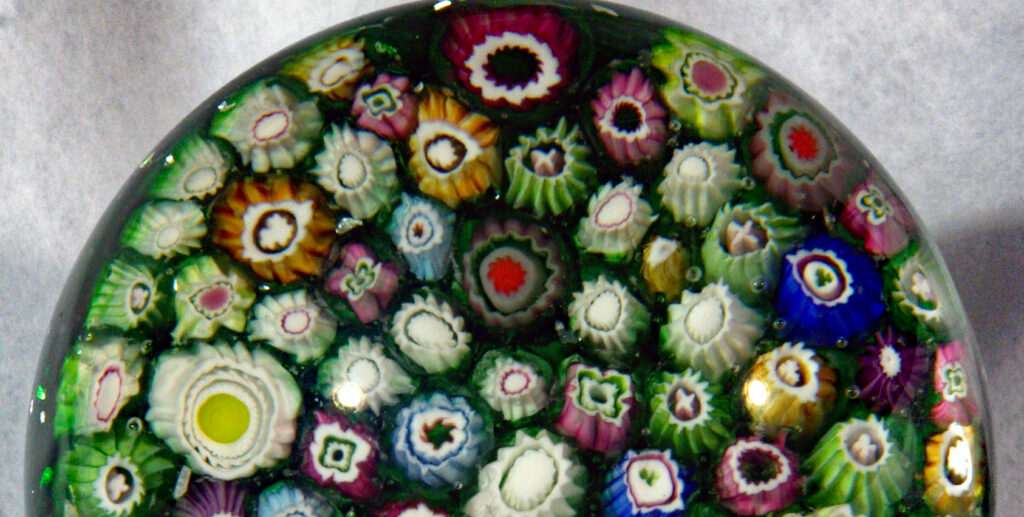
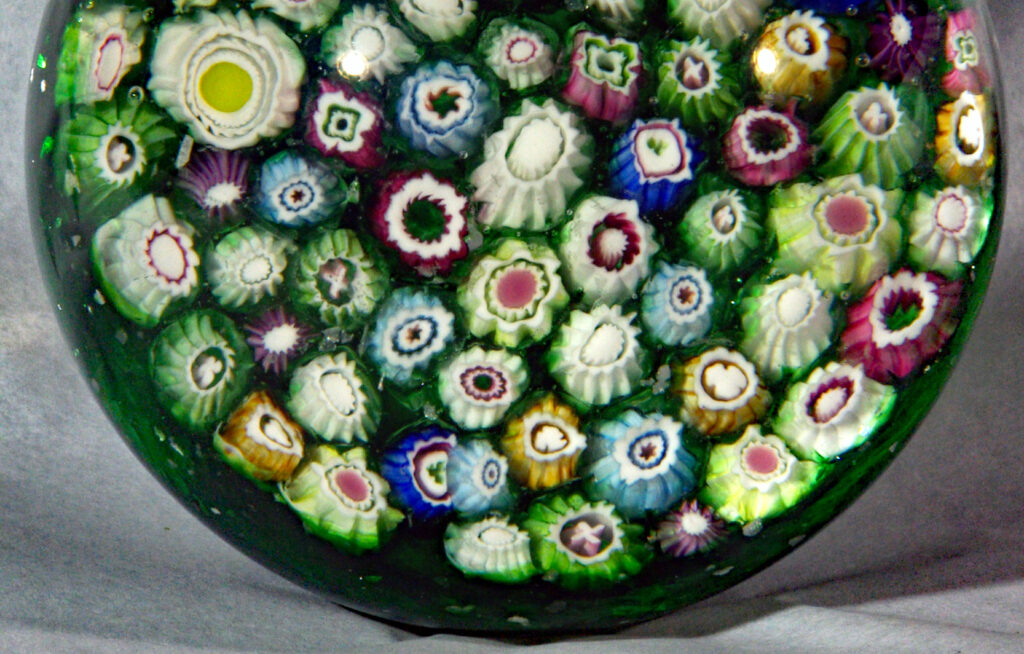
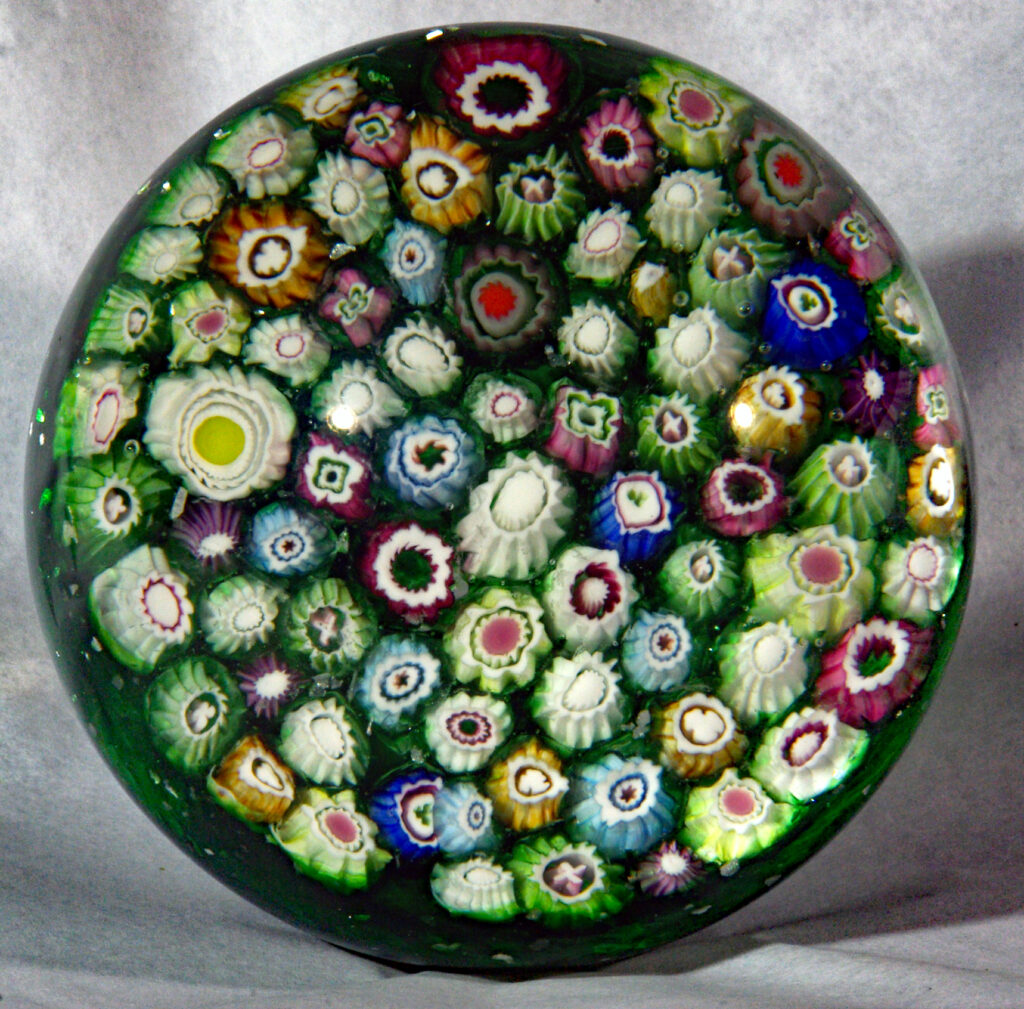
PW232. Josef Riedl (Polann, North Bohemia) Museum Piece (c. 1880-1890). These are my personal favorite Bohemian weights. I place them in a category with the best French closepacks and they are at least as rare. The canes are colorful and exciting. It has a fabulous mica flecked green ground that is reminiscent of the famous Clichy moss ground and an overall festive appearance. The condition is original excellent with some shelf wear – no significant issues. An important weight for any complete collection of the world’s great paperweights. It includes two “pimento-stuffed olive” canes and one that looks like lemon custard. 2 13/16 inch diameter; 2 3/16 inches tall; fourteen ounces. $575
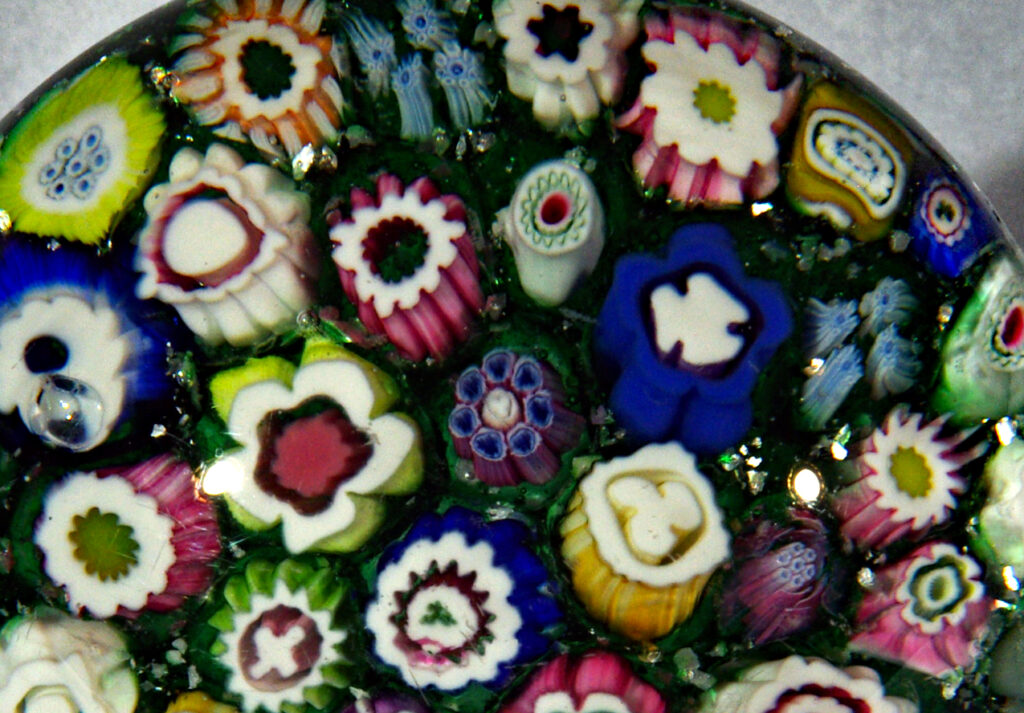
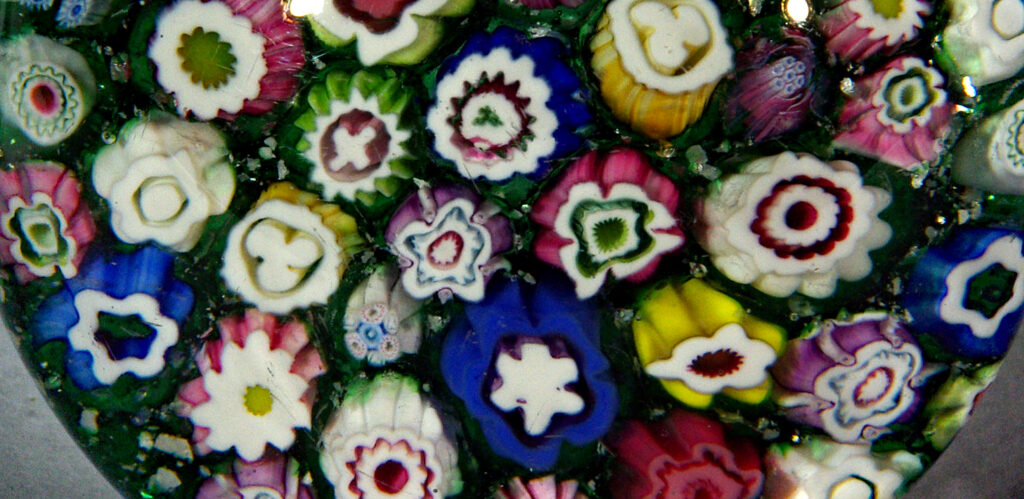
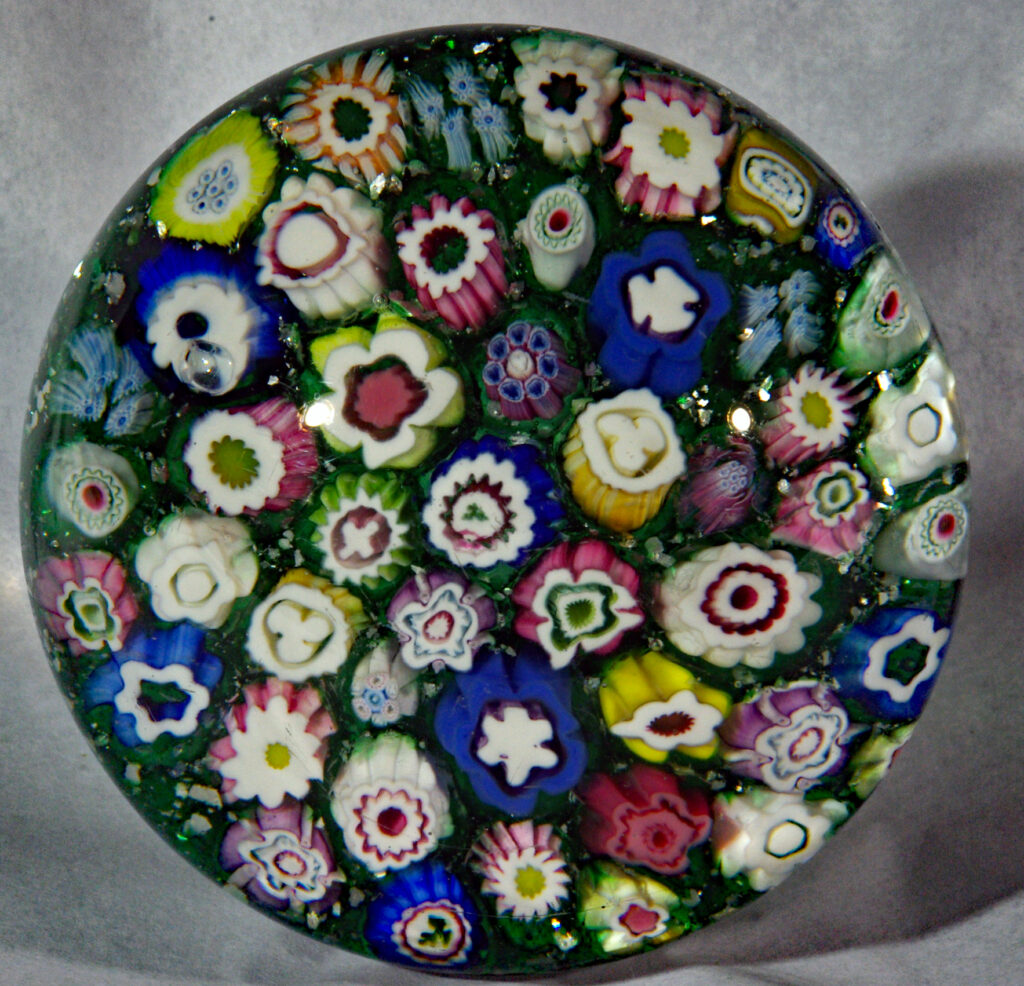
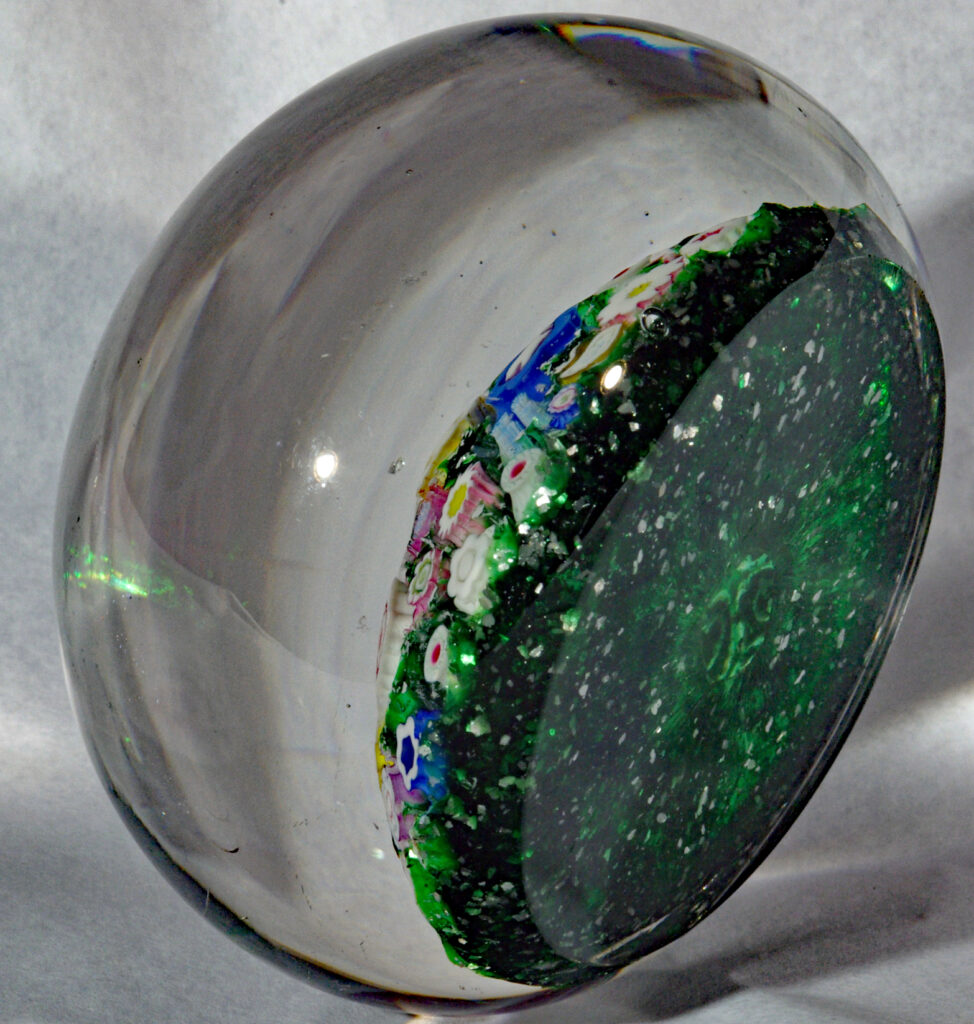
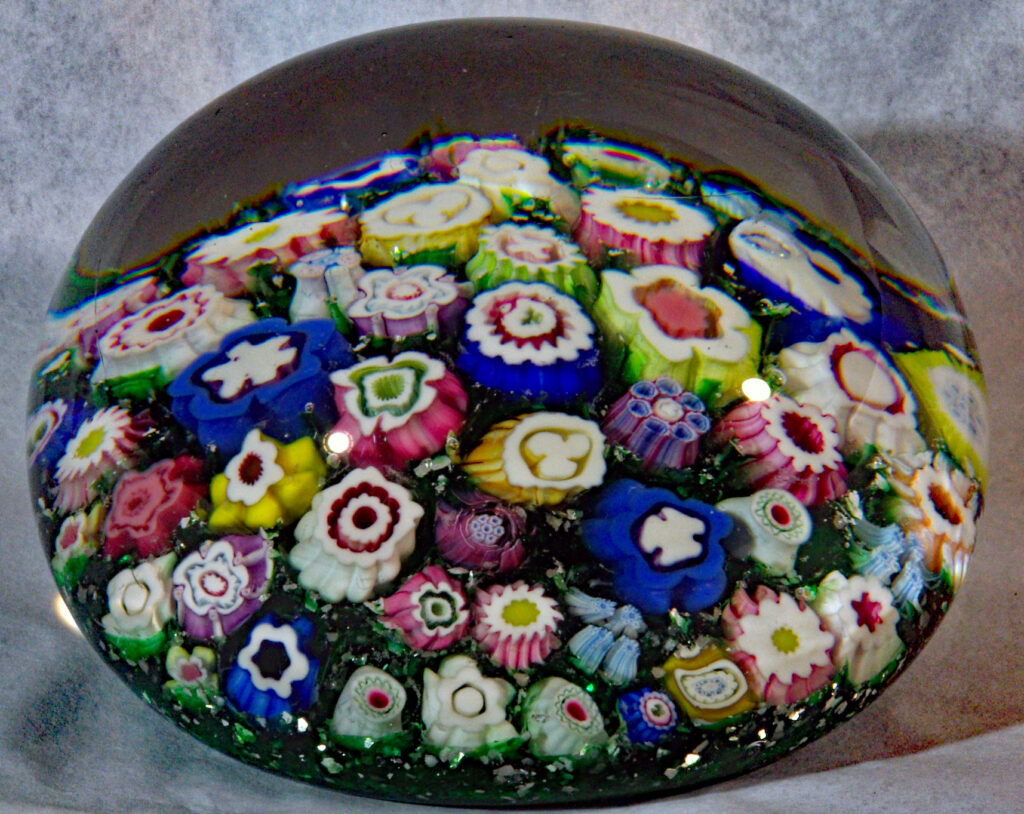
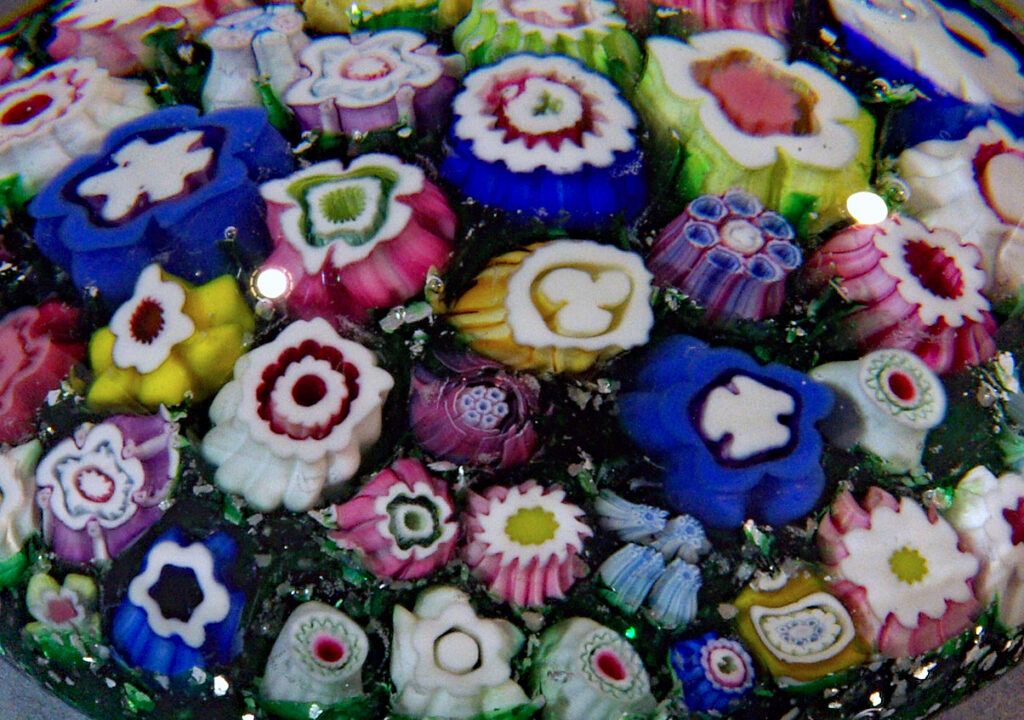
PW1630. Josef Riedl (Polann, North Bohemia) Museum Piece (c. 1880-1890). These are my personal favorite Bohemian weights. I place them in a category with the best French closepacks and they are at least as rare. The canes are colorful and exciting. It has a fabulous mica flecked green ground that is reminiscent of the famous Clichy moss ground and an overall festive appearance. The condition is original excellent with light scratches you need to look hard to see and some shelfwear – no significant issues. An important weight for any complete collection of the world’s great paperweights. This one was particularly well made with properly spaced, uniform-sized, colorful canes in a very nice dome-shape. I suspect this to be a mid-to-late Riedl due to the complexity of the canes and quality of the work. The mica-flecked green ground is especially sparkly. 2 13/16 inch diameter; 1 7/8 inches tall; twelve ounces. $600
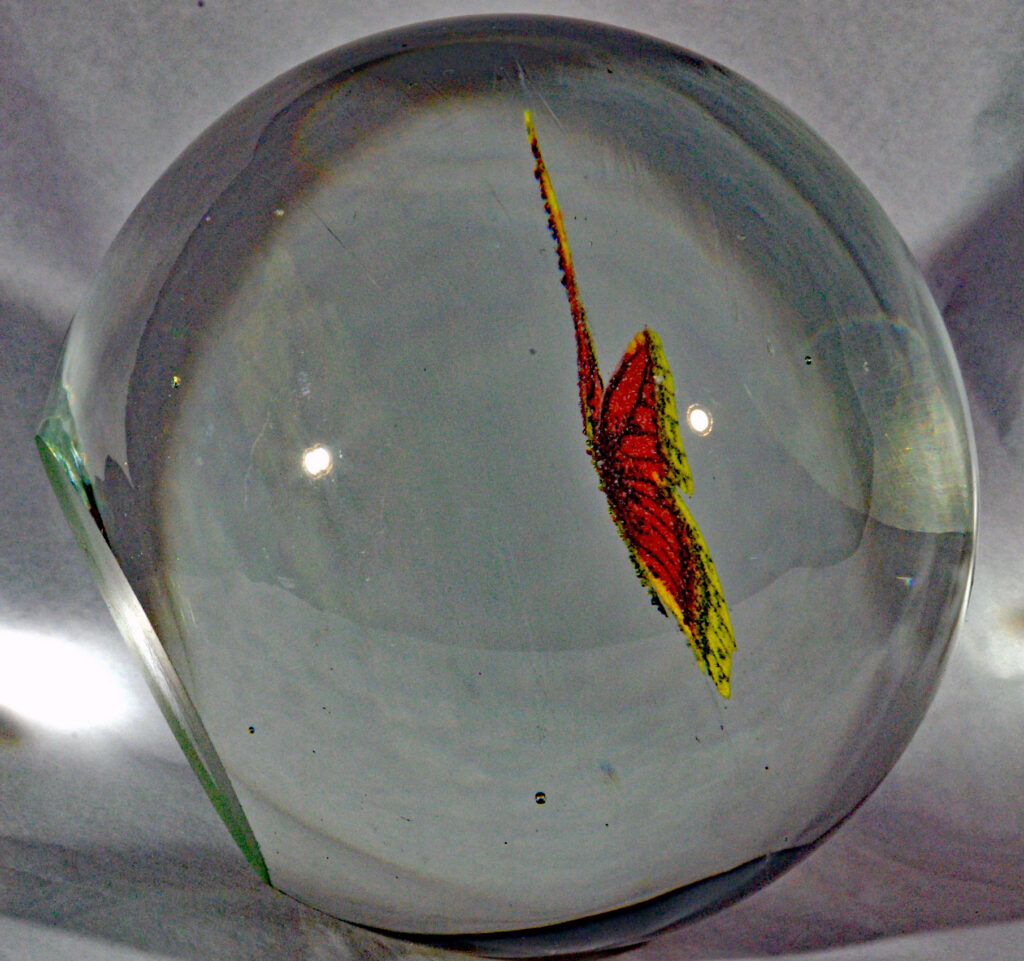
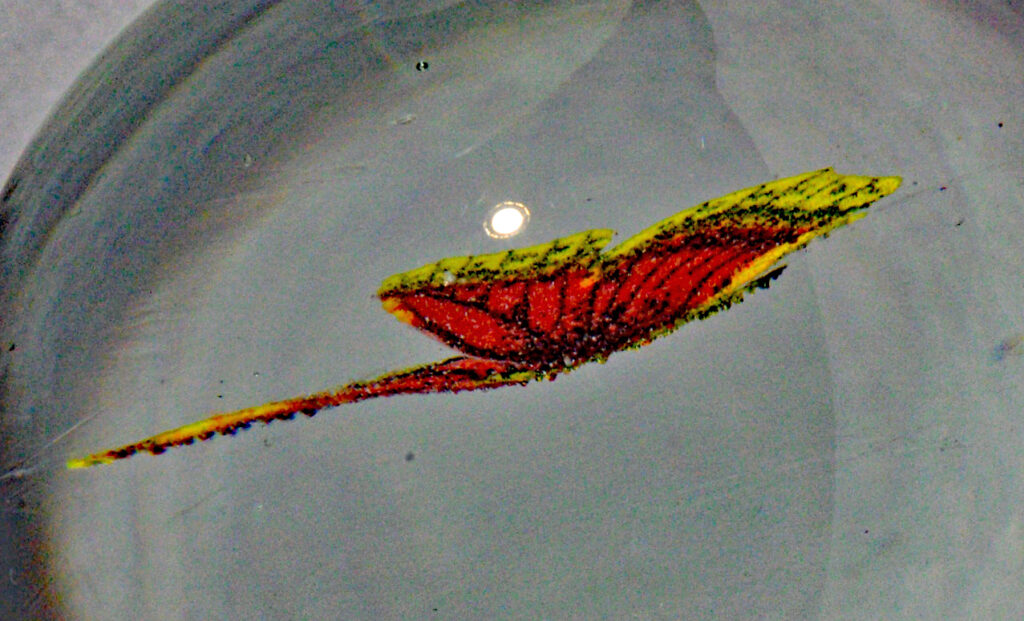
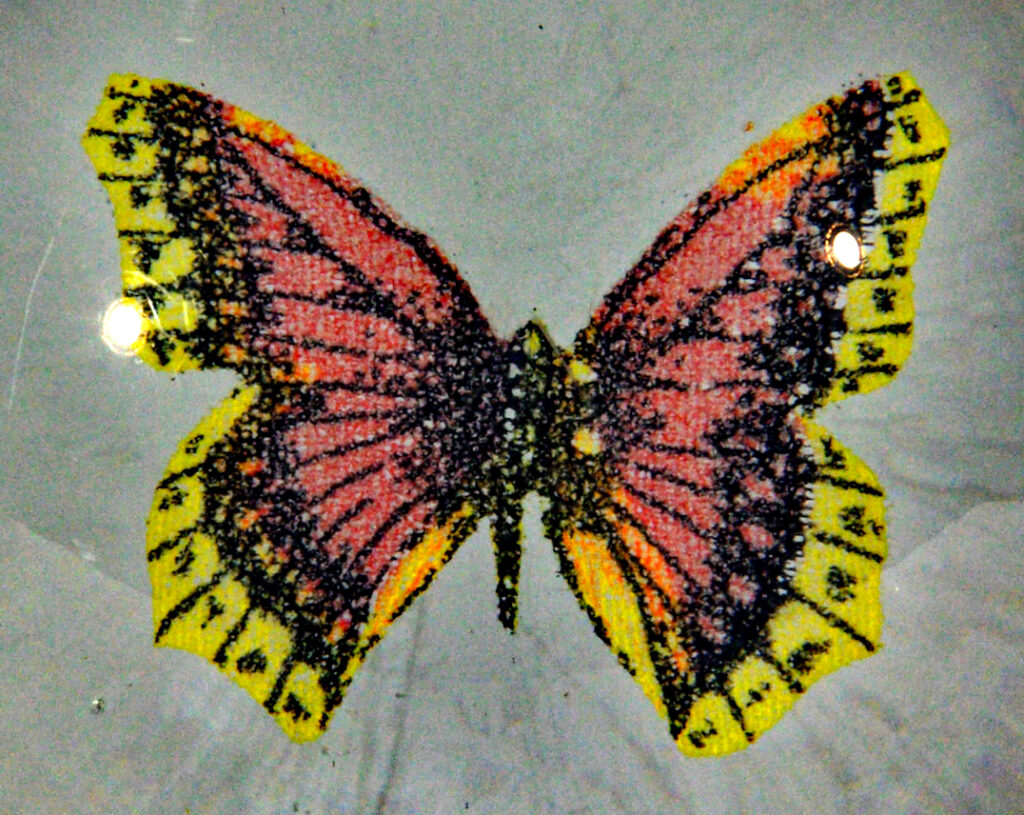
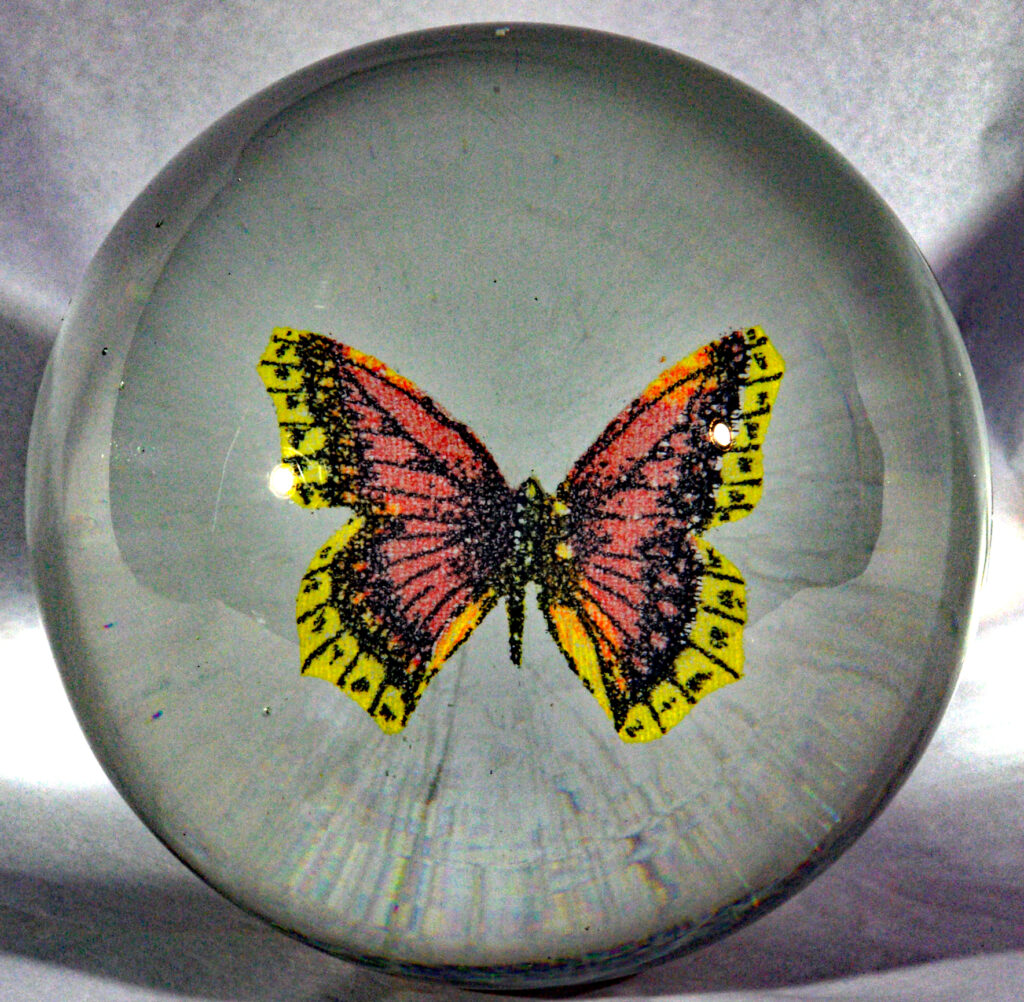
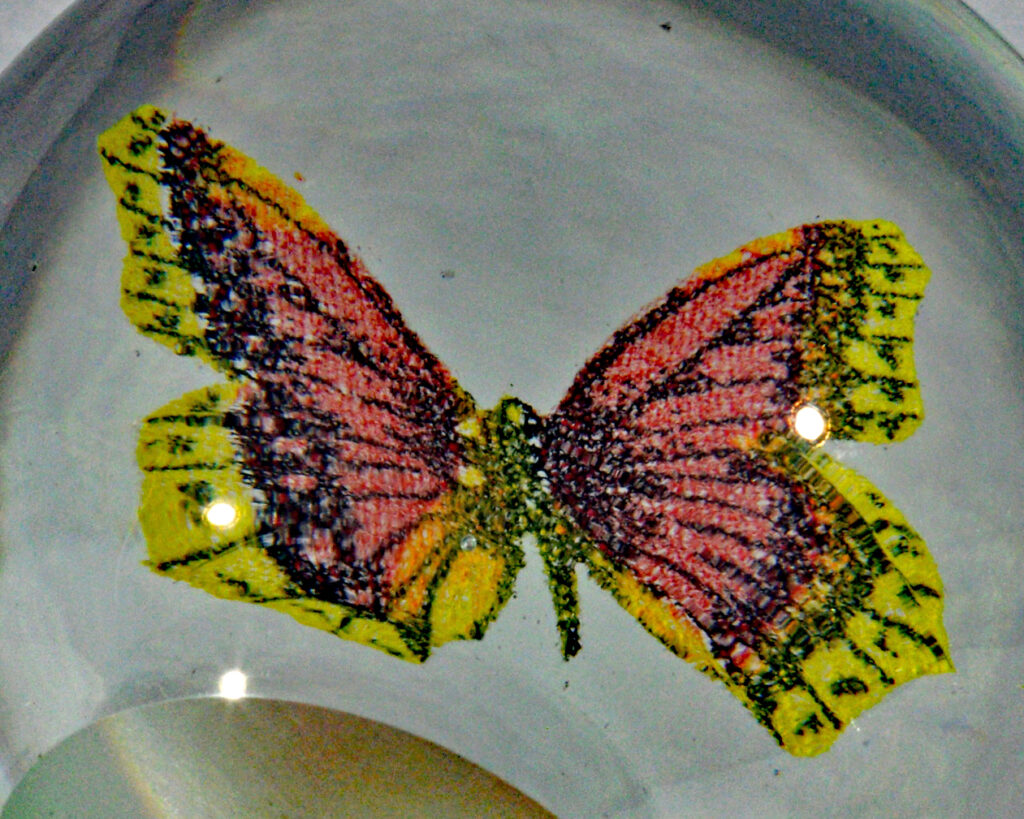
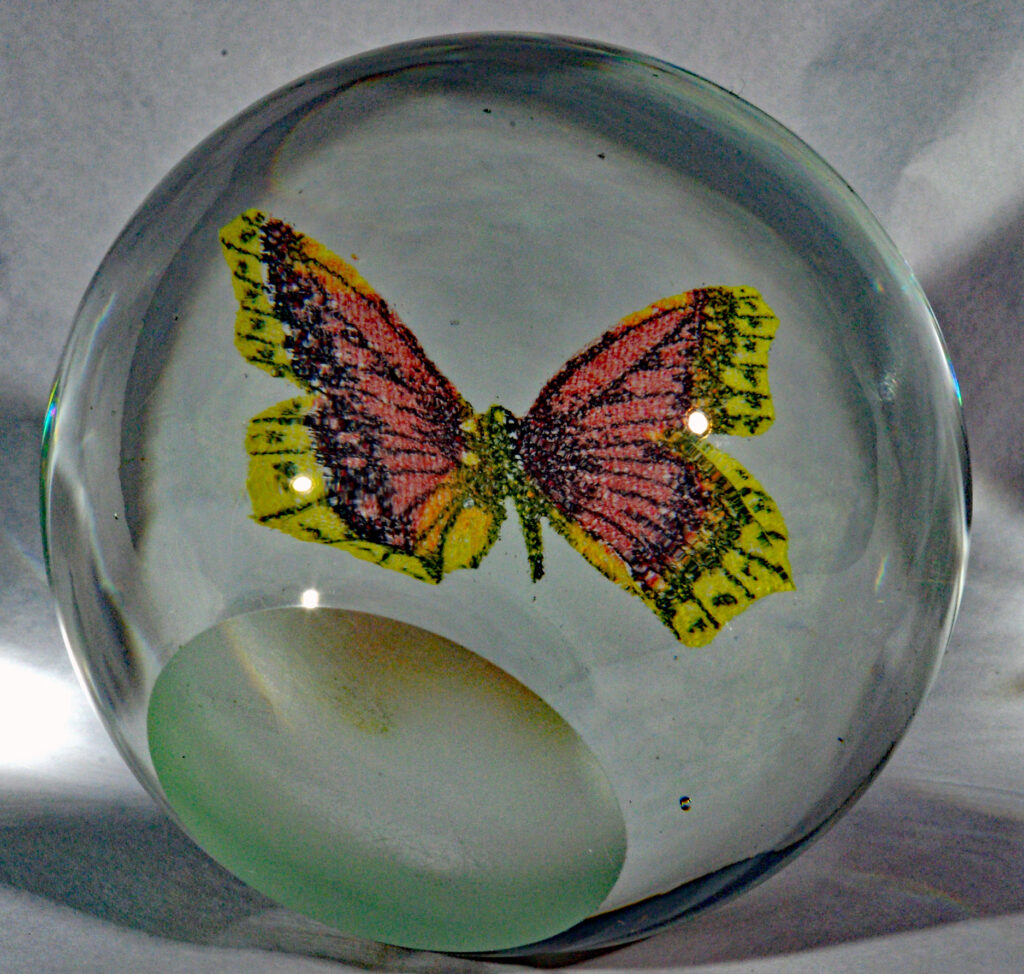
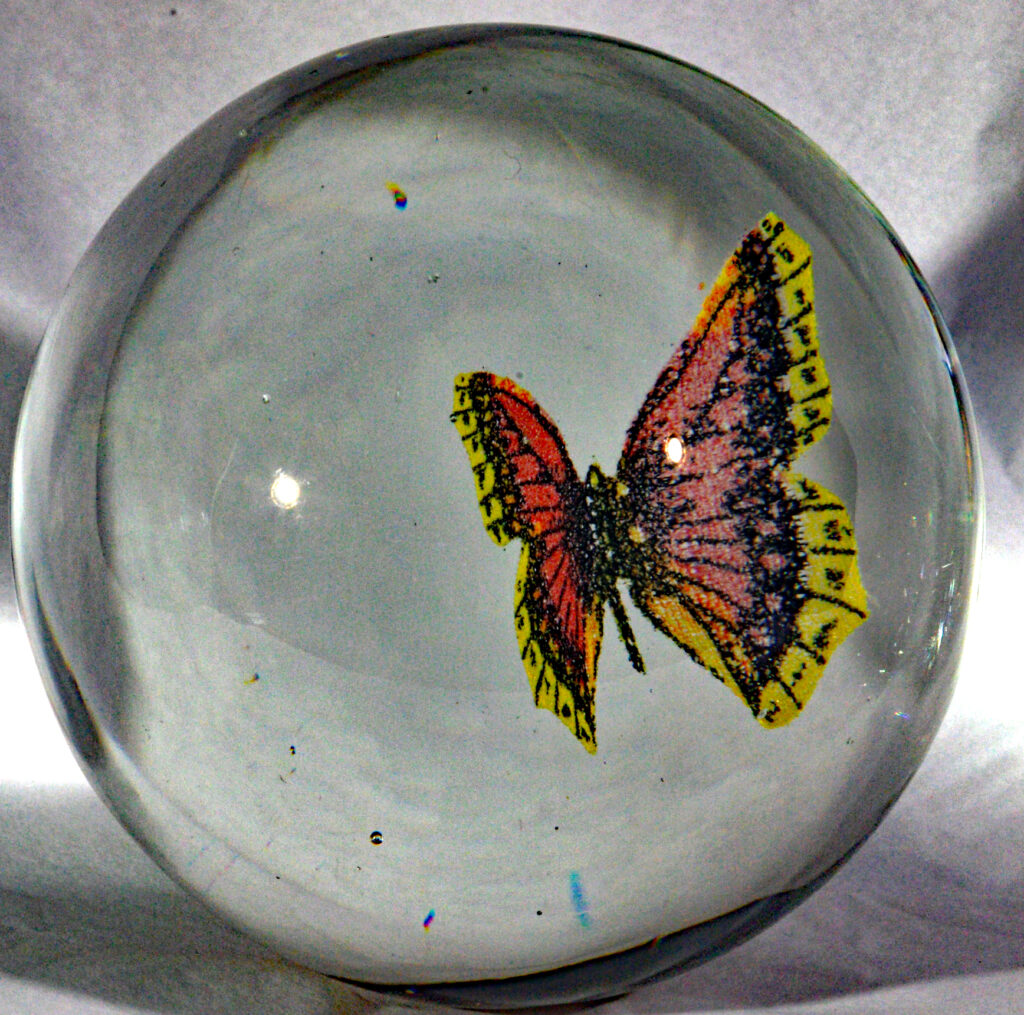
PW3010. Bohemian Museum piece. 19th or early 20th century. The butterfly has been the quarry of many a glass worker over the centuries, and many techniques have been employed in this quest. The age-old issue with glass manufacture is that unless whatever you add is made from glass, it will incinerate once it meets the orange-glowing molten glass of the paperweight making process. What we have here appears to be glass cloth with frit (crushed glass of assorted colors) painted on. Stunning in its simplicity. Condition is excellent for its age – nothing but expected perfect light shelf wear and light scratches. We have one of these on display in our living area. It’s nice to always have a butterfly hovering about, and it’s quite realistic from two feet away. 3 1/8 inches tall; 3 ½ inch diameter; one pound and fifteen ounces. $75 (less than .02% of a bitcoin, which is pretend money – a crazy low price because few collectors collect Bohemia glass. It’s a hundred years old. How many wars did it miraculously survive with no damage?)
